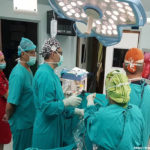 I’ve acquired loads of messages about where the most popular articles I’ve written about the future of drugs could be accessed. I believed I’d share the record in a single put up, I hope you’ll enjoy it!
I’ve acquired loads of messages about where the most popular articles I’ve written about the future of drugs could be accessed. I believed I’d share the record in a single put up, I hope you’ll enjoy it!
Thanks John James! Sure, it is time for a national bill of patient’s rights. It’s time the hospitals prove they will maintain sufferers safe. It is time they present extra math, numbers that prove your nurse and hospitalists really do have time for you; time to maintain you protected and time to offer the excellent care that can return you to the very best well being.
Reimbursement charges, nevertheless, are only half of the money equation. Costs are the opposite. Radiology Oncology Techniques, for instance, helps support these clinics by providing refurbished linear accelerators at lower than half the cost of the new machines that are bought by the big hospitals that can afford to make frequent upgrades. This refurbished equipment permits the clinics to keep their operating prices low while enhancing patient care with newer know-how.
Throughout that 12 months (2005), I’ve linked with a number of the women at our new church. I went to a great ladies’s conference and am excited concerning the future I have growing with these women. I’ve also gone on one thing referred to as artist’s dates, which are opportunities to get out and be impressed. I’ve had some very special subject journeys with associates and all of this has allowed me to be extra alive.
Technological developments underpinned this process, from the opthalmoscope and improved microscopes that exposed micro-organisms, to devices like the kymograph, to measure blood stress and muscular contraction. By mid-century, the stethoscope, invented in France in 1817 to help diagnosis of respiratory and cardiac issues, turned the symbolic icon of the medical profession. Nevertheless, probably the most well-known British visual image, Luke Fildes’s The Doctor (exhibited on the Royal Academy in 1891) exhibits a medical man with virtually no ‘trendy’ tools.

















